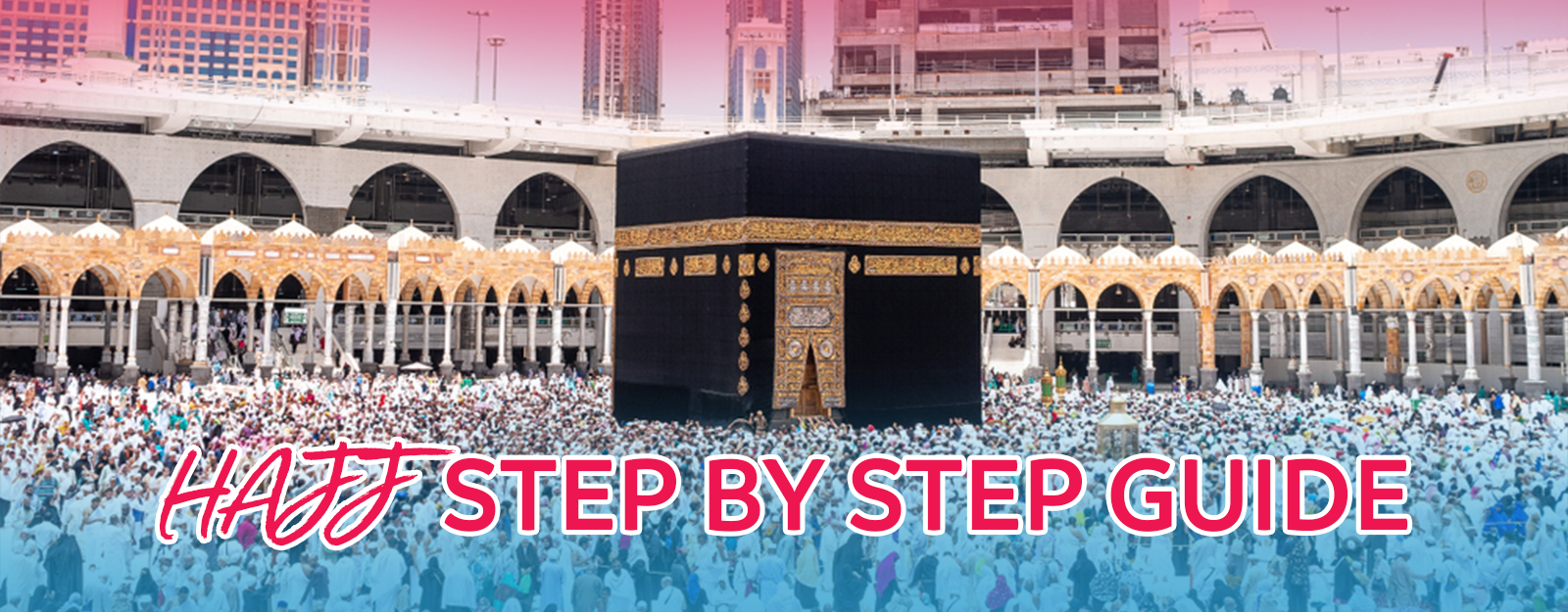
Every year, millions of Muslims gather in Makkah to perform the religious pilgrimage. It is an obligation for every Muslim to perform Hajj once in their lifetime, if they are financially stable. It is a test of the Muslims patience, steadfastness, and level of spirituality.
It starts on the 8th of Dhul Hijjah every year and lasts for 5 days. This year, Hajj will be between June 14th and June 18th, respectively, depending on the sighting of the moon.
The complete Hajj Guide 2024 journey comprises 18 steps, as follows:
Before entering the boundaries of Makkah, called Miqat, you first have to have the pure intention of doing Hajj and then entering the state of Ihram. Ihram is different for both men and women. For men, it consists of two loose pieces of white clothing without stitches. Only one of the two shoulders should be covered; the other one must be uncovered. For women, loose-fitting clothes are necessary, along with a headscarf.

On the next day before dawn, the Muslims leave Muzdalifah and again go to Mina to throw the pebbles at the largest of three columns called Jamarat al Aqaba, which is the stoning of the devil. This spot holds significant importance. It is believed that in this place, the devil appeared to scare Hazrat Ibrahim (AS) when he was going to sacrifice his beloved son Ismail (AS) on the commandment of Allah (SWT). In an effort to scare off the devil, threw pebbles at him.
On the same day, Muslims have to offer a sacrifice in the name of Allah (SWT) called nahr. In remembrance of Hazrat Ibrahim’s (AS) sacrifice, Muslims all over the world are celebrating Eid Ul Adha today.

The act of throwing the stones, called rami, continues for two days. There are three pillars on which the rami is performed: Jamarat al-Ula (the small pillar), Jamarat al-Wusta (the middle pillar), and Jamarat al-Aqaba (the large pillar). Start by throwing off the seven pebbles from the smaller pillar, then the middle pillar, and finally the larger pillar (seven pebbles on each).
After rami (throwing of stones), the pilgrims will shave their heads. Men can either completely shave off their heads, called halq, or trim their hair, called taqsir. Women can trim their hair up to the length of their fingertip.
The farewell tawaf is called Tawaf al Wida, which is the final tawaf before saying goodbye to the Holy Place. After that, the pilgrims can remove the Ihram and move back to Mina, which marks the completion of Hajj.
When a person, on whom Hajj becomes compulsory, completes the Hajj properly, his or her sins are forgiven, as if he or she is a newly born person. (Hadith)
We believe that only education and skill development can empower youth, shaping their futures and substantiating the deprived community.
BANK DETAILS
Bank Name: Bank Islami
Account Title: Saya E Khuda E Zuljalal
Account Number: 2053-5712157-0001
IBAN NUMBER: PK60BKIP0205357121570001
Bank Name: Cashplus Bank
Account Title: Saya E Khuda E Zuljlal
Account Number: 07845728
Sort Code: 08-71-99

© SKZ Foundation TM 2017. Privacy Statement , Terms & Conditions Registered Charity No: 1200520. Head Office: 4 hollis lock, Chelmsford CM2 6RR UK. Disclaimer: SKZ Foundation is not affiliated with any external websites. SKZ Foundation is not responsible for the content of external internet sites and any links from external web sites to this site do not constitute an endorsement of that site by SKZ Foundation.
Copyright @ 2024 Single Solution. All Rights Reserved.